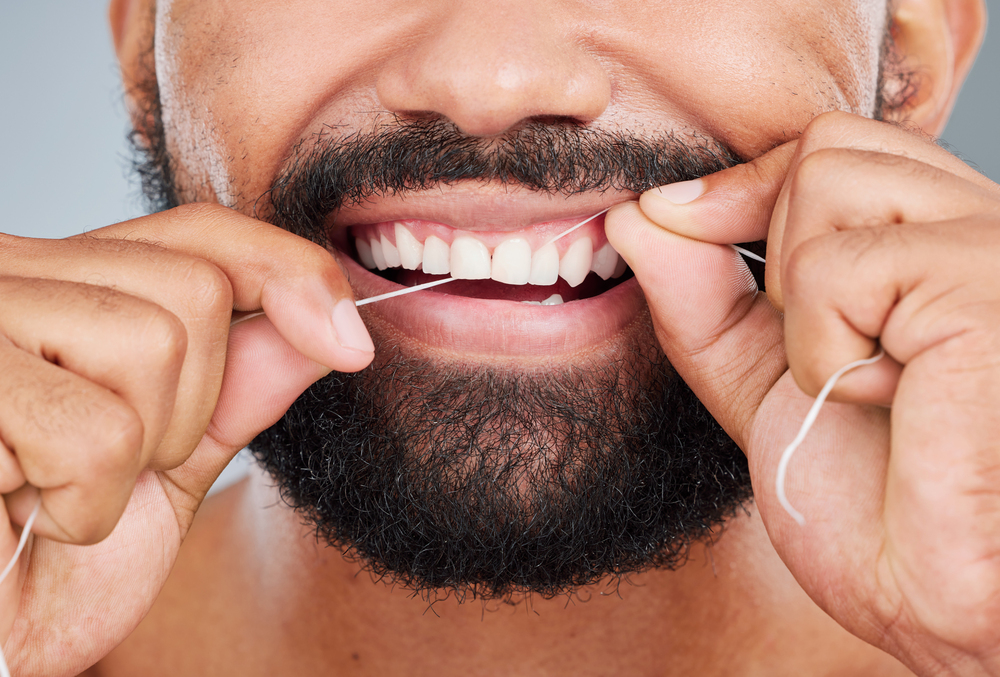Flossing and Gum Health: What Every Waterloo Dentist Wants You to Know

Flossing is one of the most powerful habits for protecting your gums, yet it’s often misunderstood, rushed, or skipped altogether. While brushing gets most of the attention, it can only do so much — especially when it comes to the spaces between teeth and just beneath the gumline where bacteria quietly build up. These overlooked areas are where gum disease often begins. To understand the full impact of flossing on gum health, each element — from technique to timing to tissue response — deserves closer attention. (Source: Colgate, Why is dental flossing good for gums?, October 7, 2024, https://www.colgate.com/en-gb/oral-health/brushing-and-flossing/why-is-dental-flossing-good-for-gums ).
Why should you floss?
Flossing clears out food particles and bacteria between teeth and under the gumline — places even the best toothbrush can’t reach. It prevents plaque buildup in the tight spaces that brushing misses, protecting not just your teeth but also the gum tissue that surrounds them.
Ashraf Dentistry explains, “Brushing without flossing is like cleaning only the top of your shoes and expecting the soles to stay spotless. For anyone serious about dental care in Waterloo, flossing is the key to stopping gum problems before they begin. It’s a preventive strike against the kind of bacterial buildup that leads to inflammation, even when your brushing habits are solid.”
What are the benefits of flossing?
Flossing removes plaque and food particles, reduces bacteria that cause bad breath, prevents tartar formation, lowers the risk of cavities, and significantly reduces the risk of developing gum disease like gingivitis or periodontitis. Done consistently, it doesn’t just keep teeth clean — it protects the structural health of the gums.
Ashraf Dentistry highlights, “One of the less talked about benefits of flossing is how it stimulates blood flow in the gums. It’s not exclusively about removing debris — it’s about giving the gum tissue a daily micro-massage that promotes resilience. Patients looking for long-term success with Dentistry in Waterloo need to understand that strong gums mean more than just no bleeding — it’s about tone, texture, and resistance. Flossing, done right, conditions the gumline to stay firm and healthy.”
How can flossing help gums?
Flossing supports gum health by preventing the inflammation caused by trapped plaque and food. It helps remove the biofilm that builds below the gumline, allowing the tissue to stay tight around the teeth. Consistent flossing can reduce gum sensitivity and bleeding, keeping the foundation of oral health strong.
Ashraf Dentistry shares, “Gums thrive in a clean, low-bacteria environment. When plaque is allowed to collect under the gumline, the body responds with inflammation — a natural defense, but one that becomes destructive over time. Flossing disrupts that cycle early. At our clinic, we often tell patients that flossing is how you keep the gums ‘sealed’ against infection — it’s a line of defense that brushing can’t offer on its own.”
Why do your gums bleed when flossing?
Bleeding gums during flossing is often a sign of inflammation from plaque buildup — not necessarily a sign that you should stop. In fact, with regular and proper flossing, bleeding typically decreases as the tissue becomes healthier. If bleeding persists long-term, it could be a sign of more advanced gum issues.
Ashraf Dentistry notes, “Bleeding is a message — not a reason to quit. It tells us that the body is reacting to bacteria beneath the gumline. For those just starting to floss, some bleeding is common and expected, especially if there’s been a history of inconsistent care. In our view, the important insight for patients in Waterloo dentist practices is this: if the bleeding improves with continued flossing, that’s healing. If it doesn’t, that’s when deeper intervention is needed.”
How to floss
Effective flossing involves wrapping a piece of floss around the fingers, sliding it gently between the teeth using a rocking motion, hugging each tooth in a C-shape, and moving the floss up and down along the tooth’s side — including just below the gumline. Flossing before brushing is recommended, as it loosens debris that brushing then removes.
Ashraf Dentistry shares, “Technique matters. Poor flossing can do more damage than good. We often encourage patients to focus not on speed, but on intention — floss like you’re polishing each tooth. Wrap the floss, curve it gently, and sweep. In cases with wider gaps or bridges, interdental brushes can be even more effective. And when people ask whether they should floss before or after brushing, the answer is clear: floss first. It primes the mouth for a more effective brush.”
Flossing is more than a hygiene step — it’s a daily investment in gum health. It removes hidden plaque, reduces inflammation, boosts circulation in gum tissue, and offers early warning signs of deeper issues. Brushing may win the popularity contest, but flossing is the unsung hero that holds the line.
Ashraf Dentistry concludes, “Think of flossing as your gums’ daily exercise. It’s not glamorous, it’s not loud, but it’s what keeps the system stable. In our conversations with patients seeking guidance from a Waterloo dentist, we often reframe flossing not as a task, but as a ritual of preservation. It preserves the soft tissue, guards against systemic inflammation, and empowers people to be proactive in their health. You won’t always see the results immediately — but you’ll feel them over time in the strength and calm of your gums.”
